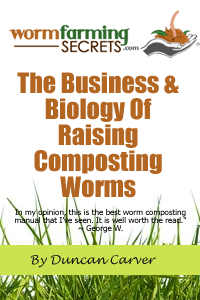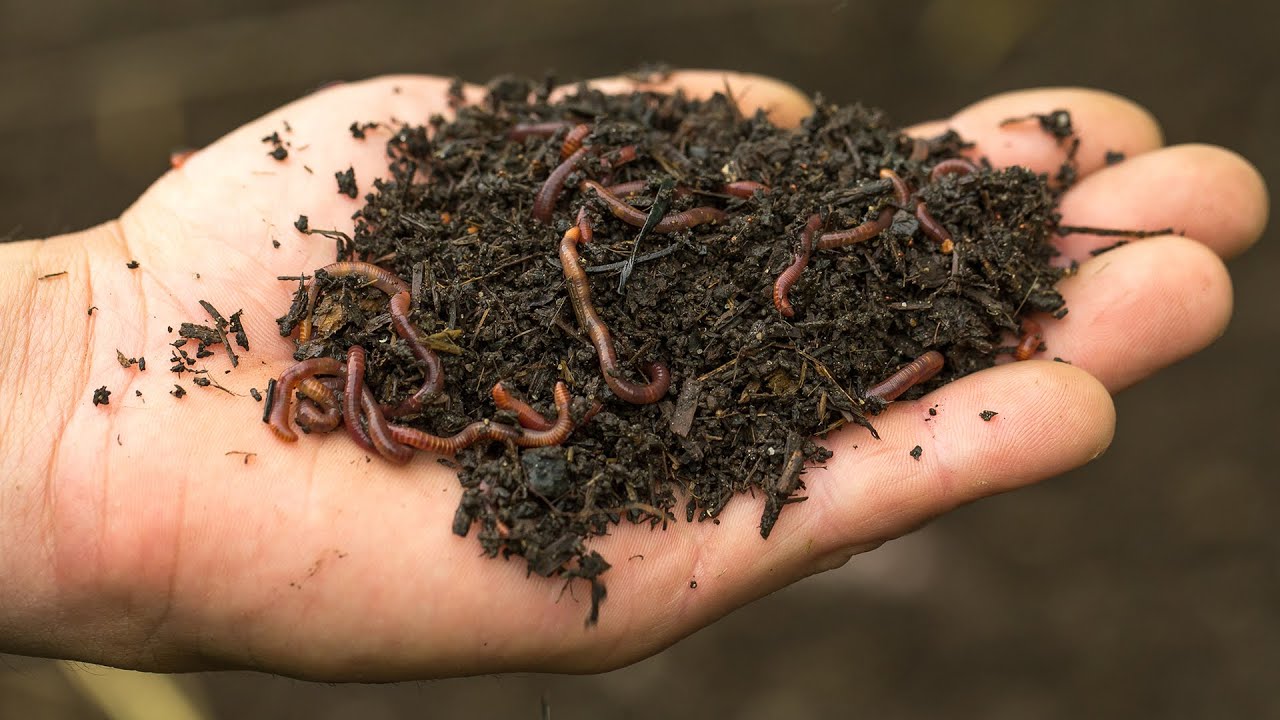“I have read that you should put sand or dirt in with your worm farms to add gristle to the worms diet. will coffee grounds succeed in doing the same job? I have not seen this answered anywhere yet. Also, bought your manual, it is a great reference point with plenty of information. Thanks.” ~ Wayne Dean
Hi Wayne,
This question leads us to a part in worms called the gizzard and it’s a very interesting topic to talk about!
In fact, the digestive system of the worm is worth touching on! I’ll talk about the worm’s digestive system before answering your question here.
The digestive system in earthworms consists of a Pharynx, oesophagus, the gizzard and the intestines. These organs are all relatively powerful muscles working together to move, breakdown and digest food.
So what are all of these long worded terms, where is it and what does it do?
To give you a better idea on where it is, imagine a long open ended tube which represents the worm. The opening is the mouth where the food goes in. Once the food passes down the tube, it passes the pharynx through the oesophagus/esophagus and into the gizzard. The contents then moves through the gizzard into the intestines which is then lead back out of the worm through the anus at the other end of the tube.
Don’t be too put off by the technical terms, basically in human terms the pharynx is the throat right behind your neck, and the oesophagus is the long tube which connects down to the stomach. It is the same with the worms and the food passes through these parts in the same order.
The only difference is that the worms do not have the same kind of stomach that we do. In replacement, the worms have the gizzard. The gizzard not only replaces the stomach but also replaces the function of the teeth.
The pharynx is a thick muscle and has two main functions; to help with eating food and to produce digestive enzymes. Worms do not have the means to introduce food into their mouths, and instead it depends on a sucking action to suck contents in.
This sucking action is responsible by the pharynx which contracts to create a suction pump effect. The pharynx also secretes whitish mucus through its glands, which is equivalent to our saliva. The mucus helps with the swallowing of the food as well as containing enzyme to start the process of digestion.
Through the pharynx, it passes down the oesophagus which uses the action of peristalsis to move the contents through into the gizzard. The peristalsis action can be best visualized by imagining the squeezing of toothpaste out of its container. As the muscle contracts it moves the content through.
Once in the gizzard, the contents are further pulverized by its contraction.
The gizzard is like a chamber with a very special lining made of chitin, the same hard material which makes up the outer shell body of many insects. This hard layer uses the consumed hard gritty material, and helps with the grinding of food as the gizzard chamber contracts again and again. This is why hard gritty material is important for worms.
Without grit, the food is broken down more slowly resulting in less efficiency and possibly a lower quality of worm cast product.
Many worm cast users know that worm cast is a great for growing plants and rejuvenating soil largely due to the diverse set of microorganisms contained within it.
You may be surprised to know that the organ responsible for this diverse set of microbes is the intestines.
After the food is broken down in the gizzard, it is passed into the intestine where more enzymes and mucus are secreted. It is also here where it is believed to be a haven for enhancing the activity of the micro-organisms ingested with the food. The secreted digestive enzymes not only helps with digesting the food, but encourages microbial growth to help breakdown the food for the worms.
As the food is digested and turned to wormcast, it is excreted through the anus with the microbes as the ‘black gold’.
I have talked a lot on the digestive system; sorry I still haven’t answered your question!
Do coffee grounds act as a good source for grit?
The answer is yes but is not the best source for the use of grit. Coffee grounds are a relatively hard material which can help with the pulverizing action in the gizzard, however it is still a degradable material which will start breaking down by the enzymes in the pharynx. Also when wet, it loses its properties as a hard grit to breakdown other food.
Better options for grit are sand, soil (they contain very fine sand-like stones) and even pulverized egg shells. If not already small, these materials can be broken down in to smaller pieces and yet it will not be degraded and digested quickly enough to be used in the gizzard.
To help your worms digest their food, you don’t need a large amount of grit all the time.
A small handful spread per 2-3 square foot is more than enough!
Hope this helped!



